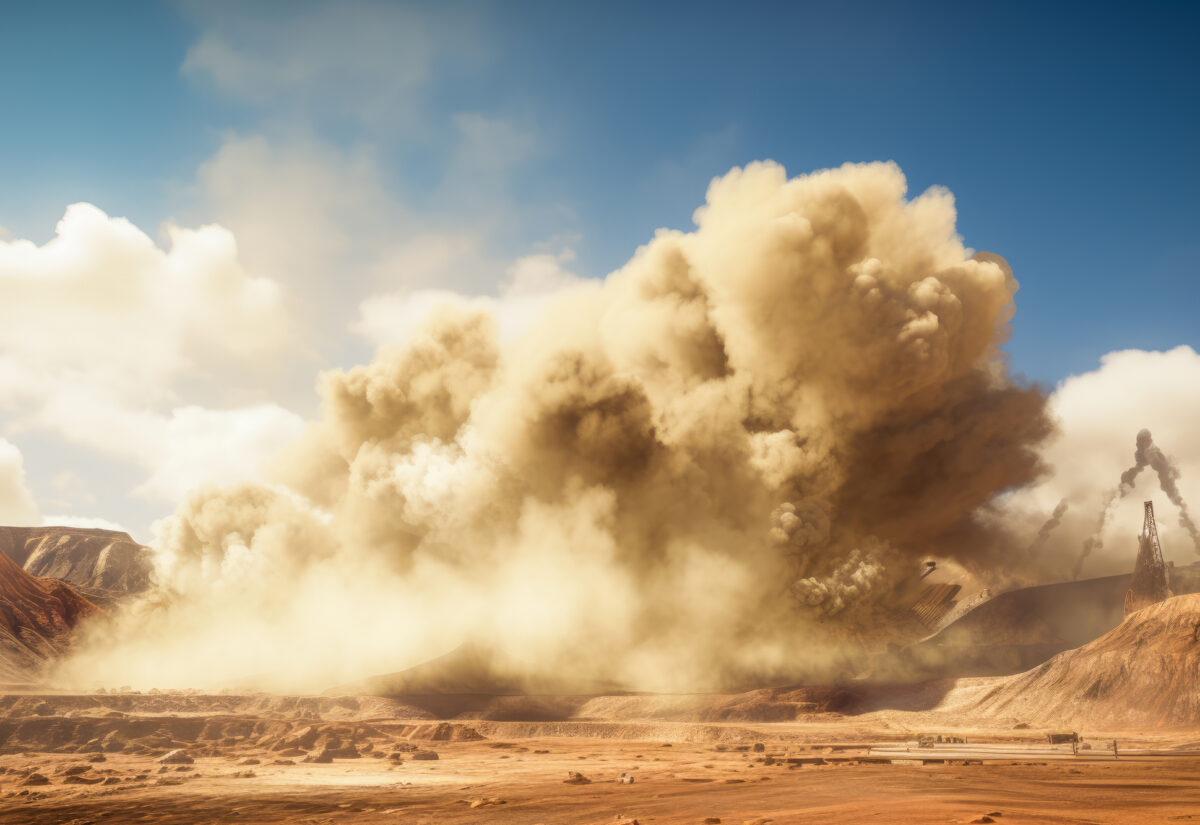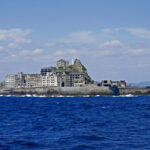
Throughout history, weather has played a quiet but powerful role in shaping events. While it’s often treated as background noise to bigger historical forces—like war, politics, or religion—weather can certainly change the course of civilisations, devastate empires, and determine the fate of entire populations. From freezing temperatures that stalled armies to mysterious darkened skies that sowed panic, bizarre weather events have left lasting imprints on the human story. These aren’t just curious footnotes; they’ve changed how people lived, how societies responded to crisis, and how borders and power structures evolved. Here are some of the most extraordinary and unexpected weather events that changed history,stretching all the way back to the ancient world.
The Year Without a Summer (1816)
In 1816, the world was plunged into a year of unseasonable cold and crop failures. Known as the “Year Without a Summer,” this strange period followed the colossal eruption of Mount Tambora in Indonesia in April 1815. It was the most powerful volcanic eruption in recorded history, and the ash and sulphur it sent into the atmosphere dramatically reduced global temperatures.
Snow fell in June in New England. Frosts destroyed crops in France. Across Europe and North America, people went hungry. The agricultural collapse led to mass migrations, economic hardship, and social unrest. In Switzerland, a group of writers including Mary Shelley and Lord Byron were stuck inside due to the cold and gloom. That summer, Shelley began drafting “Frankenstein,” inspired by the eerie weather. The event altered global weather for at least three years, reminding the world just how interconnected we are to the atmosphere.
The Great Storm of 1703
Considered the most violent storm in British history, the Great Storm of 1703 battered southern England with hurricane-strength winds. Over 8,000 people died, mostly at sea. The Royal Navy suffered catastrophic losses, and entire fleets were destroyed. Inland, thousands of trees were uprooted, buildings collapsed, and livestock were killed.
The storm hit during a time of war and political change, making its impact more than just meteorological. Some believed it was divine punishment for national sins. Author Daniel Defoe chronicled the storm in detail, creating what many consider the first example of modern disaster journalism. It sparked early interest in weather science and had lasting effects on how maritime safety was approached.
The Battle of Waterloo (1815)
Napoleon’s final defeat at the Battle of Waterloo was shaped not just by strategy and manpower, but by the weather. Torrential rains the night before the battle turned the fields of Belgium into thick mud. Artillery and cavalry movements were hampered, delaying Napoleon’s ability to launch a full attack.
That delay gave Prussian reinforcements enough time to join British forces under the Duke of Wellington, turning the tide against the French. Without that rain, the timing of the battle may have been very different. A single night of weather arguably altered the future of Europe.
The Dust Bowl (1930s)
In the American Midwest, years of poor farming practices, combined with a prolonged drought, created the Dust Bowl of the 1930s. Vast clouds of dust swept across the Great Plains, darkening skies and destroying livelihoods. These storms could last for days, driving families from their homes and burying entire farms.
The environmental disaster contributed to the severity of the Great Depression. It forced a federal response that led to the creation of soil conservation programs and reshaped agricultural policy in the United States. The migration of Dust Bowl refugees, particularly to California, transformed the social fabric of several states.
The Little Ice Age (1300–1850)
This multi-century cold snap wasn’t a single weather event but an extended period of cooler temperatures that affected much of the world. In Europe, it led to shorter growing seasons, failed harvests, and freezing winters. The Thames River in London froze over repeatedly, leading to the famous “frost fairs” held on the ice.
The Little Ice Age contributed to famines, social unrest, and economic downturns. In China, weakened harvests put pressure on dynastic stability. In Scandinavia, it helped bring an end to Viking settlements in Greenland. It was a slow-moving disaster that gradually reshaped societies across centuries.
The Great Famine and the Black Death (1315–1351)
Beginning in 1315, relentless rain pounded northern Europe, leading to crop failures, livestock diseases, and famine. This period, known as the Great Famine, lasted until 1317, but left lasting damage to the population’s resilience.
A generation later, the weakened population was especially vulnerable when the Black Death arrived. Some historians argue that the weather-driven famine was a major contributing factor to the plague’s catastrophic death toll. It’s a stark example of how climate conditions can weaken societal structures long before a more obvious catastrophe strikes.
The Kamikaze Typhoons (1274 and 1281)
The Mongol Empire, under Kublai Khan, attempted two massive invasions of Japan. In both cases, typhoons struck at crucial moments, smashing Mongol fleets and drowning tens of thousands of soldiers. The Japanese referred to these storms as “kamikaze,” meaning divine wind, and credited them with saving the nation.
The invasions were the largest naval operations in the world at the time. Had they succeeded, Japan’s history, and the Mongol Empire’s expansion, might have looked very different. The typhoons became central to Japan’s national mythology and even influenced wartime propaganda centuries later.
The Freezing of the Nile (829 CE)
One of the strangest historical accounts of extreme weather comes from Egypt in 829 CE. Chronicles from the Abbasid period describe the Nile River freezing, an unheard-of event in a region defined by heat. Temperatures reportedly dropped so drastically that the river iced over, and snow fell in the desert.
While modern climatologists debate the accuracy of the records, the event may have coincided with volcanic activity elsewhere or rare Arctic air circulation patterns. If true, the event would have caused havoc in a region that relied entirely on the predictable flooding of the Nile for food and trade.
The Dark Day of 1780
On 19 May 1780, daytime turned to night across parts of New England and eastern Canada. Chickens roosted, people lit candles at noon, and some believed Judgement Day had arrived. While the cause is believed to have been a combination of forest fires, fog, and dense cloud cover, the emotional impact was profound.
In the midst of the American Revolutionary War, the event was interpreted by some as a divine sign. It even influenced political debates, with legislators in Connecticut continuing their session to prove their resolve in the face of apparent apocalypse.
The Storm That Sank the Spanish Armada (1588)
In 1588, Spain sent its formidable Armada to invade England and restore Catholic rule. English forces engaged the fleet in battle, but it was the weather that truly sealed Spain’s defeat. After the main engagement, the Spanish ships tried to sail north around Scotland and Ireland to return home, only to be caught in severe storms.
The storms scattered the fleet, wrecking ships along rocky coastlines. Thousands of sailors died, and the Armada’s failure marked the decline of Spanish naval supremacy. The episode solidified England’s power and was interpreted by many as divine favour in support of Protestantism.
The Megadrought That Ended the Akkadian Empire (circa 2200 BCE)
The Akkadian Empire, one of the first great empires in Mesopotamia, collapsed suddenly around 2200 BCE. Archaeological evidence suggests that a megadrought lasting several decades devastated agriculture, dried up rivers, and triggered mass migrations.
Written records describe famine, abandoned cities, and invasions by surrounding tribes. The collapse of the Akkadian Empire marks one of the earliest known examples of climate-induced societal collapse, and it reshaped the political landscape of the ancient Near East for centuries.
The Volcanic Winter of 536 CE
Often described by historians as the worst year to be alive, 536 CE saw the start of a mysterious fog that darkened the skies across Europe, the Middle East, and parts of Asia. Contemporary accounts speak of the sun as dim as the moon, failed harvests, and falling temperatures.
Modern studies suggest the culprit was a massive volcanic eruption, possibly in Iceland or North America, that released aerosols into the atmosphere. The cooling that followed led to years of famine, economic collapse, and may have played a role in triggering the first pandemic of bubonic plague a few decades later.





